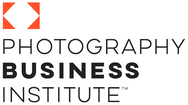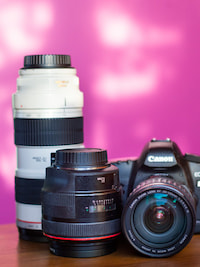Earlier this week, we shared why Cash Flow Planning is so important in your photography business if you’re serious about making a profit. Here’s part 2, where guest blogger and photography business financial expert Jerry Weiner of post-production and workflow gurus PWD Labs presents two other useful financial management tools and how they relate to Cash Flow Planning. You can see examples of how to implement these concepts in the guide: Can I Afford That New Camera?
Financial Management Tools
In the same way your camera body alone can’t get the job done, Cash Flow Planning is just one of the tools used to manage a small business. Two other important tools are Budgeting and Breakeven Analysis. Both of these are used in conjunction with Cash Flow Planning to provide input for making decisions.
Budgets & Cash Flow Planning
No business, large or small, should operate without a budget. This may sound like advice from an ivy-league MBA but it’s really just good common sense. Otherwise, how do you know where you’re going or if you’ve gotten there?
Budgets should be built month-by-month for a year at a time – usually a calendar year. No budget will ever be exactly right. As with Cash Flow Planning, the real value in creating a budget is the process of doing so, not the result. Asking and answering “What if…?” questions can provide useful insights.
For a small business that operates on a cash basis, what’s the difference between building a budget and planning your cash flow? After all, a budget lists all items of income & expense and projects them month-by-month into the future, as does Cash Flow Planning. It may seem like a duplication of effort.
Let me explain the difference. Your budget is done once a year. At the time it is put together, the budget represents your best knowledge of the future. This data in your budget becomes the starting point for your Cash Flow Planning. Over time, as estimates become realities, the cash flow plan is updated to provide you as the small business owner with a more accurate view of the future.
Breakeven Analysis & Cash Flow Planning
Breakeven Analysis addresses the question: How much business do I need to do so that I have enough left over to pay all of my other business bills? To answer this question, we need to know:
• The percentage that job-related expenses take up of each job, on average. Job-related expenses include things such as your time shooting, second-shooters, post-production, and print fulfillment. This requires you to consider your pricing.
• How much the other business bills are. Referred to as Fixed or Overhead expenses, these include your regular draw aka what you pay yourself if anything (less anything you are “paid” to shoot), any employees you need to pay, studio rent, new equipment, education & training, professional memberships and accounting fees.
As illustrated in the guide Can I Afford That New Camera?, your Cash Flow Planning can separate expenses into Job-Related and Fixed, the same as that needed for Breakeven Analysis. By doing so, it is easy to use the same data for both reports.
These tools can be made informed decisions on pricing your photography as well as other financial decisions that will help you to better manage your business for growth and profitability.
Want to learn more?
Are you ready to change your pricing from a fear-based reaction to a business decision?
The profit is in the pricing! Your prices even help you attract your model client while scaring off the clients that just don’t fit.
Join me in this free 60 minute webinar to learn how to profitably price your photography. Seating is limited. Reserve your spot now!









